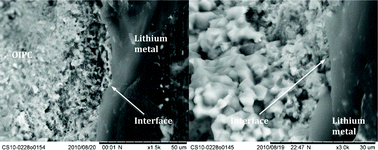The organic ionic plastic crystal material N,N-dimethyl pyrrolidinium tetrafluoroborate ([C1mpyr][BF4]) has been mixed with LiBF4 from 0 to 8 wt% and shown to exhibit enhanced ionic conductivity, especially in the higher temperature plastic crystal phases (phases II and I). The materials retain their solid state well above 100 °C with the melt not being observed up to 300 °C. Interestingly the conductivity enhancement is highest with the lowest level of LiBF4 addition in phase II, but then the order of enhancement is reversed in phase I. In all cases, a conductivity drop is observed at the II → I phase transition (105 °C) which is associated with increased order in the pure matrix, as previously reported, although the conductivity drop is least for the highest LiBF4 amount (8 wt%). The 8 wt% sample displays different conductivity behaviours compared to the lower LiBF4 concentrations, with a sharp increase above 50 °C, which is apparently not related to the formation of an amorphous phase, based on XRD data up to 120 °C. Symmetric cells, Li/OIPC/Li, were prepared and cycled at 50 °C and showed evidence of significant preconditioning with continued cycling, leading to a lower over-potential and a concomitant decrease in the cell resistivity as measured by EIS. An SEM investigation of the Li/OIPC interfaces before and after cycling suggested significant grain refinement was responsible for the decrease in cell resistance upon cycling, possibly as a result of an increased grain boundary phase.

You have access to this article
 Please wait while we load your content...
Something went wrong. Try again?
Please wait while we load your content...
Something went wrong. Try again?


 Please wait while we load your content...
Please wait while we load your content...